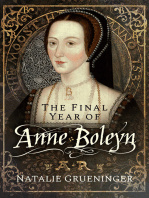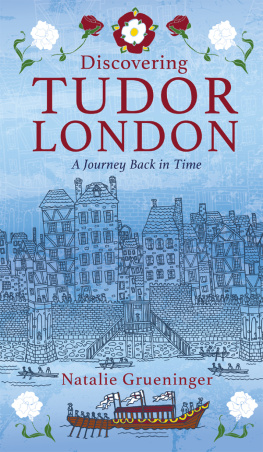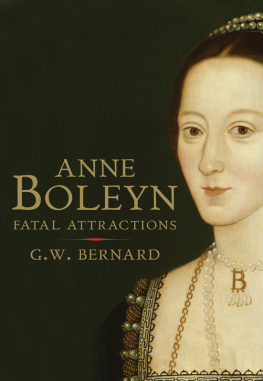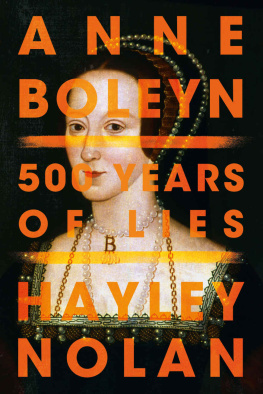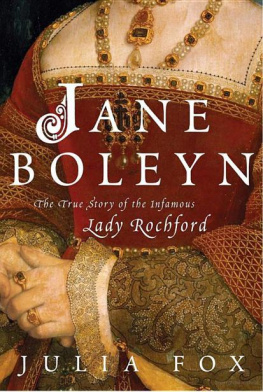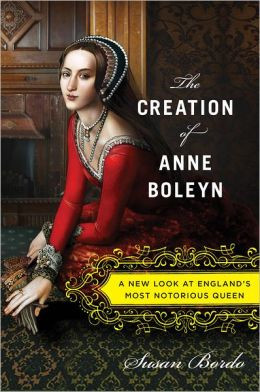Natalie Grueninger - The Final Year of Anne Boleyn
Here you can read online Natalie Grueninger - The Final Year of Anne Boleyn full text of the book (entire story) in english for free. Download pdf and epub, get meaning, cover and reviews about this ebook. genre: Science. Description of the work, (preface) as well as reviews are available. Best literature library LitArk.com created for fans of good reading and offers a wide selection of genres:
Romance novel
Science fiction
Adventure
Detective
Science
History
Home and family
Prose
Art
Politics
Computer
Non-fiction
Religion
Business
Children
Humor
Choose a favorite category and find really read worthwhile books. Enjoy immersion in the world of imagination, feel the emotions of the characters or learn something new for yourself, make an fascinating discovery.
- Book:The Final Year of Anne Boleyn
- Author:
- Genre:
- Rating:3 / 5
- Favourites:Add to favourites
- Your mark:
- 60
- 1
- 2
- 3
- 4
- 5
The Final Year of Anne Boleyn: summary, description and annotation
We offer to read an annotation, description, summary or preface (depends on what the author of the book "The Final Year of Anne Boleyn" wrote himself). If you haven't found the necessary information about the book — write in the comments, we will try to find it.
The Final Year of Anne Boleyn — read online for free the complete book (whole text) full work
Below is the text of the book, divided by pages. System saving the place of the last page read, allows you to conveniently read the book "The Final Year of Anne Boleyn" online for free, without having to search again every time where you left off. Put a bookmark, and you can go to the page where you finished reading at any time.
Font size:
Interval:
Bookmark:
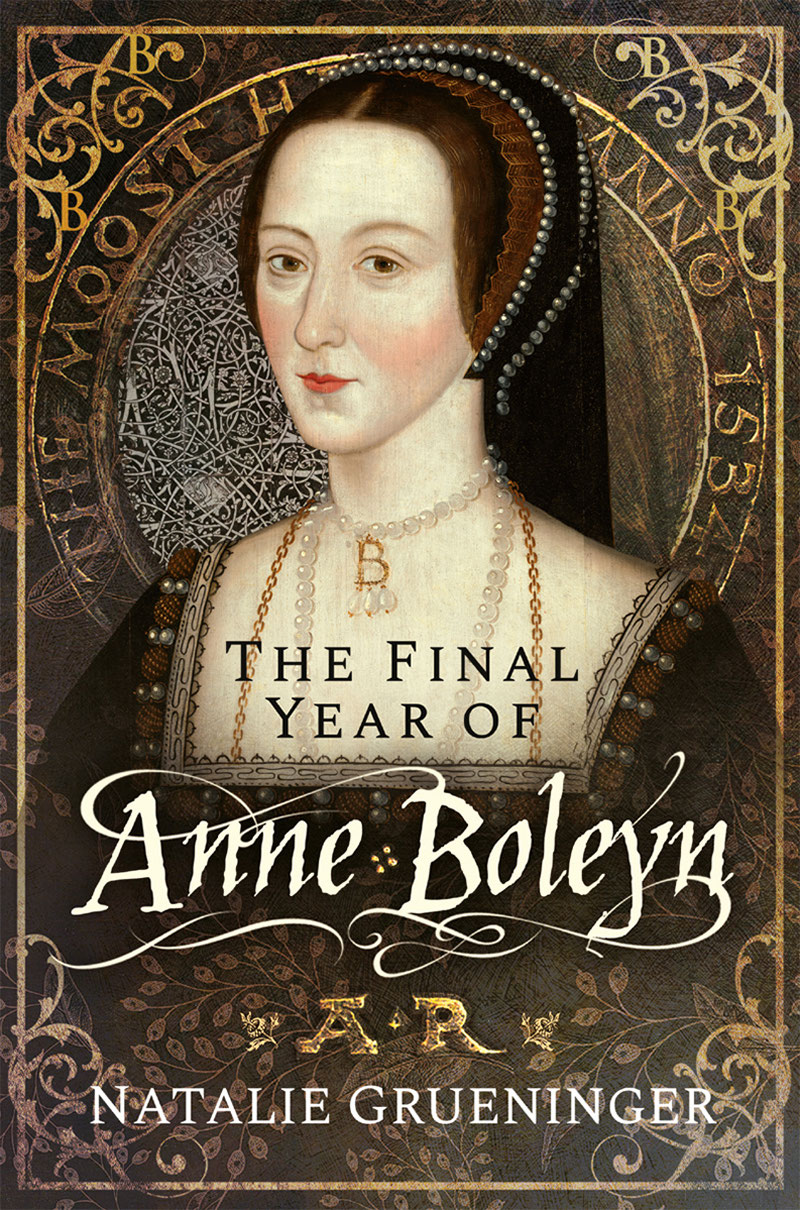
The Final Year of Anne Boleyn
The Final Year of Anne Boleyn
Natalie Grueninger

First published in Great Britain in 2022 by
Pen & Sword History
An imprint of
Pen & Sword Books Ltd
Yorkshire Philadelphia
Copyright Natalie Grueninger 2022
ISBN 978 1 52677 698 3
EPUB ISBN 9 781 526 776 990
MOBI ISBN 9 781 526 776 990
The right of Natalie Grueninger to be identified as Author of this work has been asserted by her in accordance with the Copyright, Designs and Patents Act 1988.
A CIP catalogue record for this book is available from the British Library.
All rights reserved. No part of this book may be reproduced or transmitted in any form or by any means, electronic or mechanical including photocopying, recording or by any information storage and retrieval system, without permission from the Publisher in writing.
Pen & Sword Books Limited incorporates the imprints of Atlas, Archaeology, Aviation, Discovery, Family History, Fiction, History, Maritime, Military, Military Classics, Politics, Select, Transport, True Crime, Air World, Frontline Publishing, Leo Cooper, Remember When, Seaforth Publishing, The Praetorian Press, Wharncliffe Local History, Wharncliffe Transport, Wharncliffe True Crime and White Owl.
For a complete list of Pen & Sword titles please contact
PEN & SWORD BOOKS LIMITED
47 Church Street, Barnsley, South Yorkshire, S70 2AS, England
E-mail: enquiries@pen-and-sword.co.uk
Website: www.pen-and-sword.co.uk
Or
PEN AND SWORD BOOKS
1950 Lawrence Rd, Havertown, PA 19083, USA
E-mail: Uspen-and-sword@casematepublishers.com
Website: www.penandswordbooks.com
For Anne,
May your story continue to inspire and connect people through the ages, and long may you reign in our hearts.
Try me good king, but let me have a lawful trial, and let not my sworn enemies sit as my accusers and judges My last and only request shall be, that myself may only bear the burden of your graces displeasure, and that it may not touch the innocent souls of those poor gentlemen, whom (as I understand) are likewise in strait imprisonment for my sake. If ever I have found favour in your sight; if ever the name of Anne Boleyn hath been pleasing in your ears, let me obtain this request.
(A letter to King Henry VIII from the Tower, attributed to Anne Boleyn)
As the light gently fades of an evening in the Great Chamber of Hever Castle, where Anne Boleyn spent much of her youth, the rippling moat which surrounds the fortress casts glittering reflections onto a sixteenth-century tapestry hanging in that space. Visitors to Hever have spent hours searching for the elusive face of Anne Boleyn in that tapestry, for it was believed to illustrate the wedding of King Louis XII of France to Princess Mary Tudor: Henry VIIIs sister. The wedding was an event that Anne Boleyn may well have attended in 1514, when she entered the French court. As the twilit luminescence dances across the many faces woven into the tapestry, one could be forgiven for believing that they had momentarily awoken from their inanimate state. However, just as light play can change our perception of an historical object, so too can the study of that objects history and construction.
When the tapestry was expertly restored by The Textile Conservancy Company in 2016, it became evident that significant alterations had been made to it. Patches had been discreetly sewn in where the original edges had frayed, and where key segments had eroded over time. They had, no doubt, been added by its earlier conservators to mirror that which had been lost. Soot from exposure to the smoke from hundreds of years of open fires had obscured a significant part of the tapestrys story, calling into question our understanding of what is depicted. Layers of dirt had cloaked an original woven inscription upon the brides gown, identifying her not as Mary Tudor, but as Queen Esther. The smoke and mirrors of time had provided us with a seemingly complete picture of the past, despite the significant losses to that image since its creation.
While this tapestry could have been created to allegorically depict both the marriage of Mary Tudor and the biblical marriage of Queen Esther to King Ahasuerus, it is also possible that it was erroneously linked to Mary Tudor years later. While looking for the face of a youthful Anne Boleyn in the wedding congregation, we have been blinded to a more troubling connection between the tapestry and Annes story. In the final days of her queenship, Anne was making very public and dangerous allegories of her own. It was the story of Queen Esther and her triumph over King Ahasueruss wicked advisor, Haman, which was evoked by Annes almoner, John Skipp, in his Passion Sunday sermon of 1536. It was a bold and dangerous move, played before king and court, and it laid bare the increasingly fraught relationship between Anne Boleyn (Esther), and Henry VIIIs chief advisor, Thomas Cromwell (Haman). It was not the queen who triumphed in Annes case, for she wasnt married to a gentle King like Ahasuerus.
A thundering storm of speculation, hearsay and misinformation about Anne Boleyns downfall has rolled about her empty throne since the brief, bloody days that marked the end of her life. Henry VIIIs frenzied efforts to wipe all memory of his wife from earth were, mercifully, only partly successful. What we are left with, however, is a body of evidence reminiscent of partial, damaged fragments of a once complete set of tapestries. Many fine efforts have been made in the past to meddle in Annes cause and make sense of these often incomplete and, at times, embellished sources. Efforts that have resulted in a kaleidoscope of conflicting theories as to why Anne Boleyn fell.
This exceptional, scholarly study of Anne Boleyns final year forensically and fearlessly challenges many of the conclusions that have been previously made. No footnote has been left unchecked and no source has been left unscrutinised. By removing the many patches of misinformation, and by washing clean the accumulation of myth, the true horror of Annes downfall is presented to us in the most lucid and compelling account to date. We will never be able to recover the full tapestry of Anne Boleyns life, but Natalie Grueninger has presented us with what is undoubtedly the most cogent and vivid picture of why her life was taken. It is an extraordinary achievement, and it does Anne justice.
Dr Owen Emmerson
Historian and Assistant Curator, Hever Castle
On the morning of Friday, 19 May 1536, a large crowd of Englishmen and women filed into the Tower of London to witness an event never before seen in the country the execution of an anointed queen of England. The star of this macabre show was Anne Boleyn, the woman King Henry VIII had ardently pursued for seven years and turned his world upside down to marry. Anne had been tried by a jury of her peers and, despite her eloquent defence, found guilty of adultery, incest and conspiring the kings death. Her five alleged lovers and co-conspirators, consisting of her younger brother George, Viscount Rochford; Sir Henry Norris, the kings Groom of the Stool; Sir Francis Weston and Sir William Brereton, both gentlemen of the Privy Chamber; and the court musician Mark Smeaton, had been dispatched by an axeman in a public display of the kings supposed justice at nearby Tower Hill two days earlier. Annes sentence, however, was to be carried out within the confines of the Tower, far from the prying eyes of any foreigners who might be touched by the plight of the fallen queen and spread favourable reports of her final moments across Europe.
Next pageFont size:
Interval:
Bookmark:
Similar books «The Final Year of Anne Boleyn»
Look at similar books to The Final Year of Anne Boleyn. We have selected literature similar in name and meaning in the hope of providing readers with more options to find new, interesting, not yet read works.
Discussion, reviews of the book The Final Year of Anne Boleyn and just readers' own opinions. Leave your comments, write what you think about the work, its meaning or the main characters. Specify what exactly you liked and what you didn't like, and why you think so.

